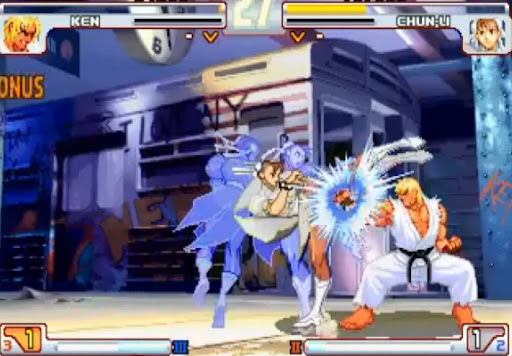The Fighting Game community has different social expectations than a lot of other areas of public life, and gaming. There is a different idea of what’s considered fair, what’s considered cheating, and what sort of behavior is expected. The FGC has its own social contract you could say. Admittedly, some of this article might just be projection on my part, of what I want to see in the community, or what I imagine the community is like, more than what is actually community norms. Some of these guidelines are going to partially restate each other.
- No one is expected to play at your level. Nobody is obligated to go easy on you.
- No one is expected to refrain from any particular tactic or character pick, especially a winning one.
- You are responsible for your negative emotions, and it is your responsibility to not lash out at other people.Trash talk is expected to be in good fun, and not borne out of a personal grudge.
- You are responsible for your character picks and your choices of tactics.
- If you think something is broken or unfair, start using it. There is no honor in choosing to lose.
- It’s okay to want the game to be different (whether it’s about balance or focus), but that should be separate from hating the game or players.
- It is polite to acknowledge and celebrate your opponent’s successes, especially when they exploit your habits or knowledge. Especially when they win in a dirty or lame way.
- Take responsibility for your mistakes or shortcomings, but don’t use them as excuses.
- It’s up to you to take improvement seriously.
- Don’t disrespect the other person’s skill level.
- It’s not your job or anyone else’s job to haze newcomers.
- Don’t be afraid to ask people for games. (and don’t apologize for being bad)
- Don’t keep secrets about how your character works.
- Keep a spirit of open collaboration.
- You’ll get better advice if you ask specific actionable questions about game scenarios, and you might not get any advice if you ask too broadly.
- Be willing to pick up new games. (corollary, don’t be that bitch that holds up brackets)
- Welcome new players and 0-2ers.
- You’re not the main character.
- Exploit every advantage available to you, but keep it in the game. Don’t be rude outside the game.
- Focus on self-improvement instead of results.
- Play to win, especially in tournament.
Altogether, the spirit of the fighting game community is that this is a place to take the game seriously, but not personally. You have a responsibility to yourself and your opponents to play your best, and never hold it against anyone else playing their best, no matter what style they choose to play.
I feel like the community has forgotten some of these when I see saltiness over people picking top tier characters, or complaining about characters or tactics they don’t like. It’s okay to want the game to be different than it is, but remember that as a competitor, you should take advantage of even the things you think are unfair or boring. A lot of modern fighting game discussion has devolved into complaining over increasingly small and ineffable imbalances in the most balanced games in the history of the genre. It would probably serve us all to have some grace and to move on to games we enjoy more when we’re not happy. There are hundreds of amazing fighting games out there, we don’t have to stick with games that make us miserable just because they’re new and popular.
All in all, have a fun time and treat your community and your competitors right. What makes the scene magical is us.









